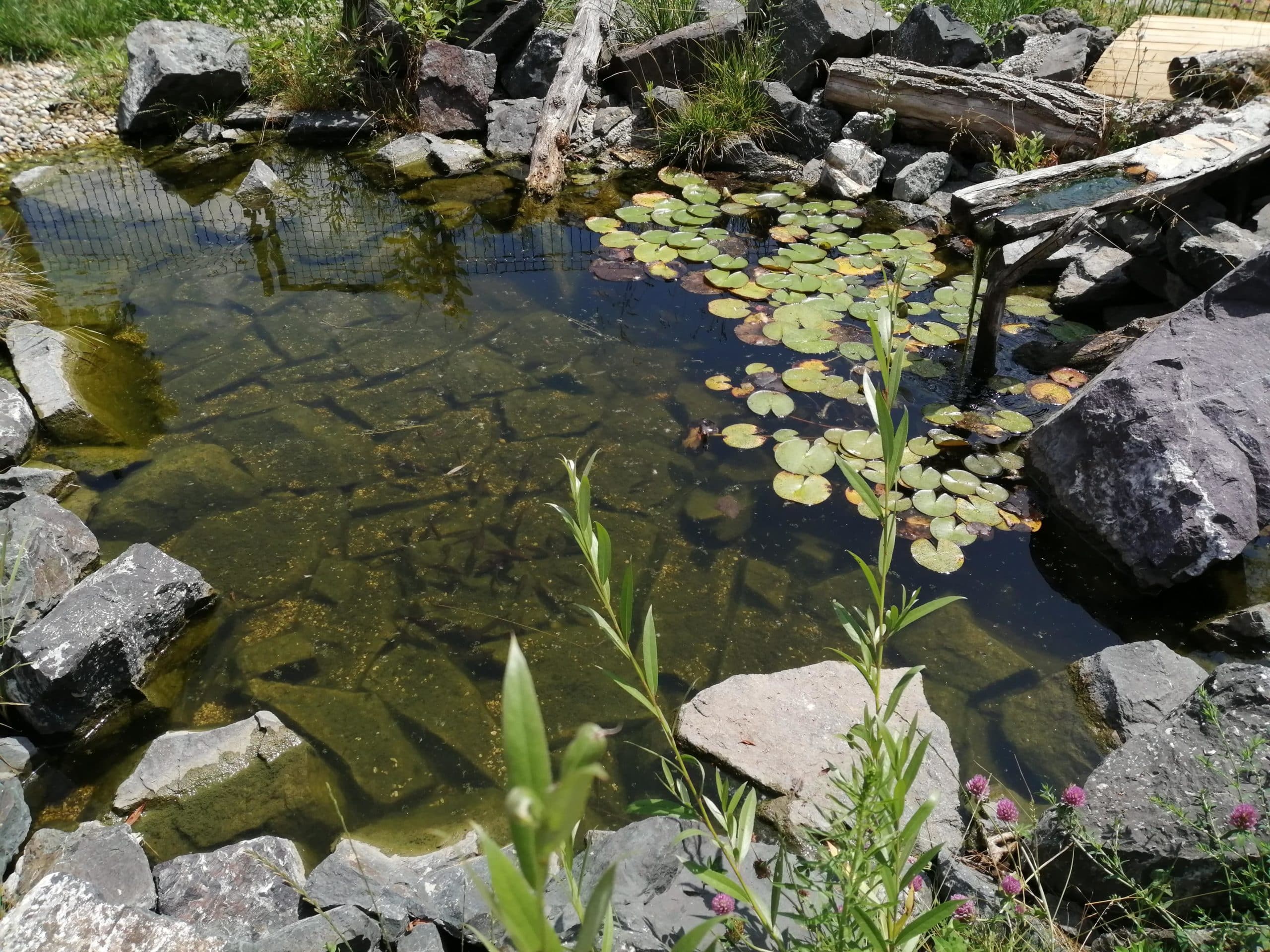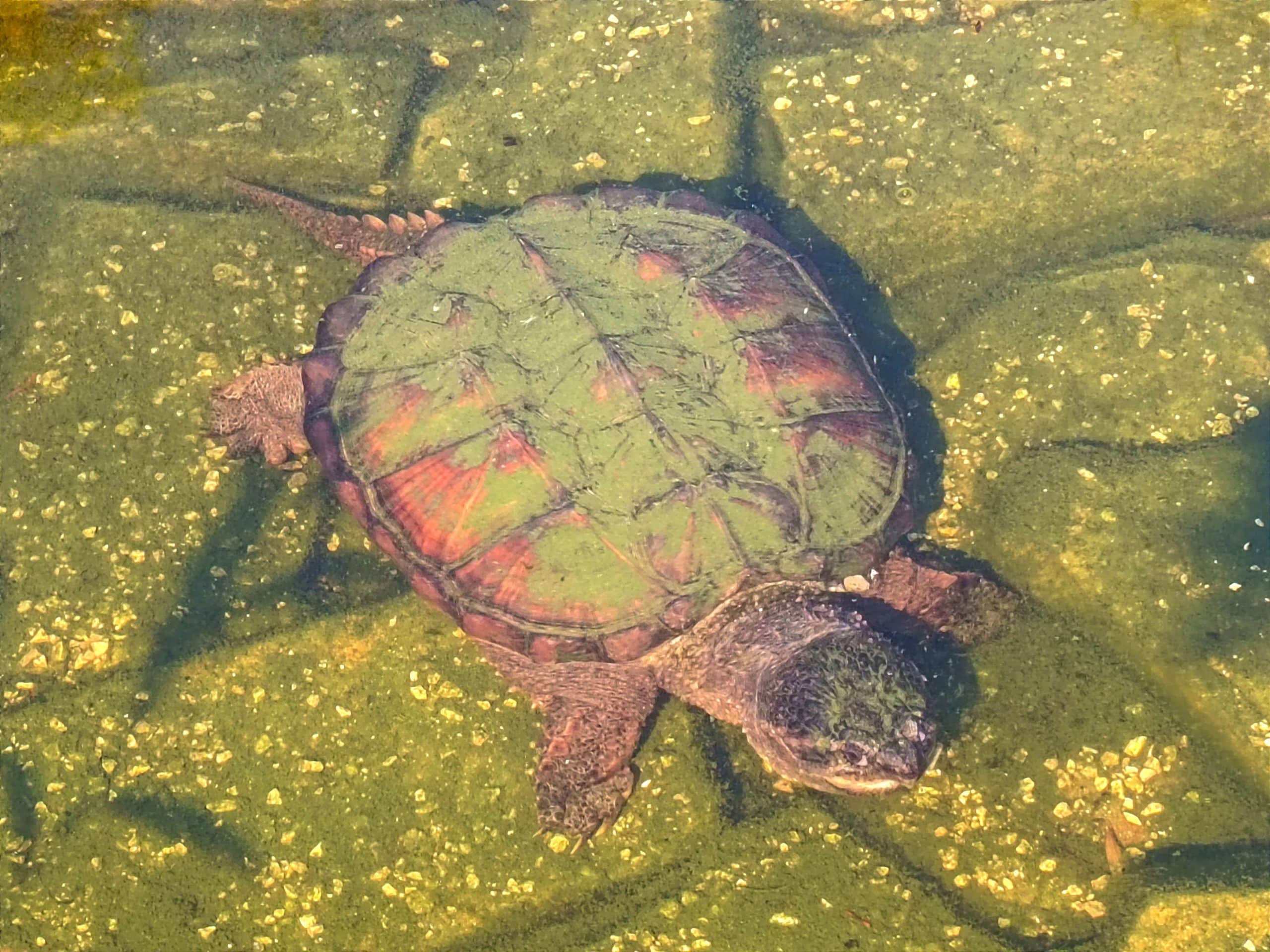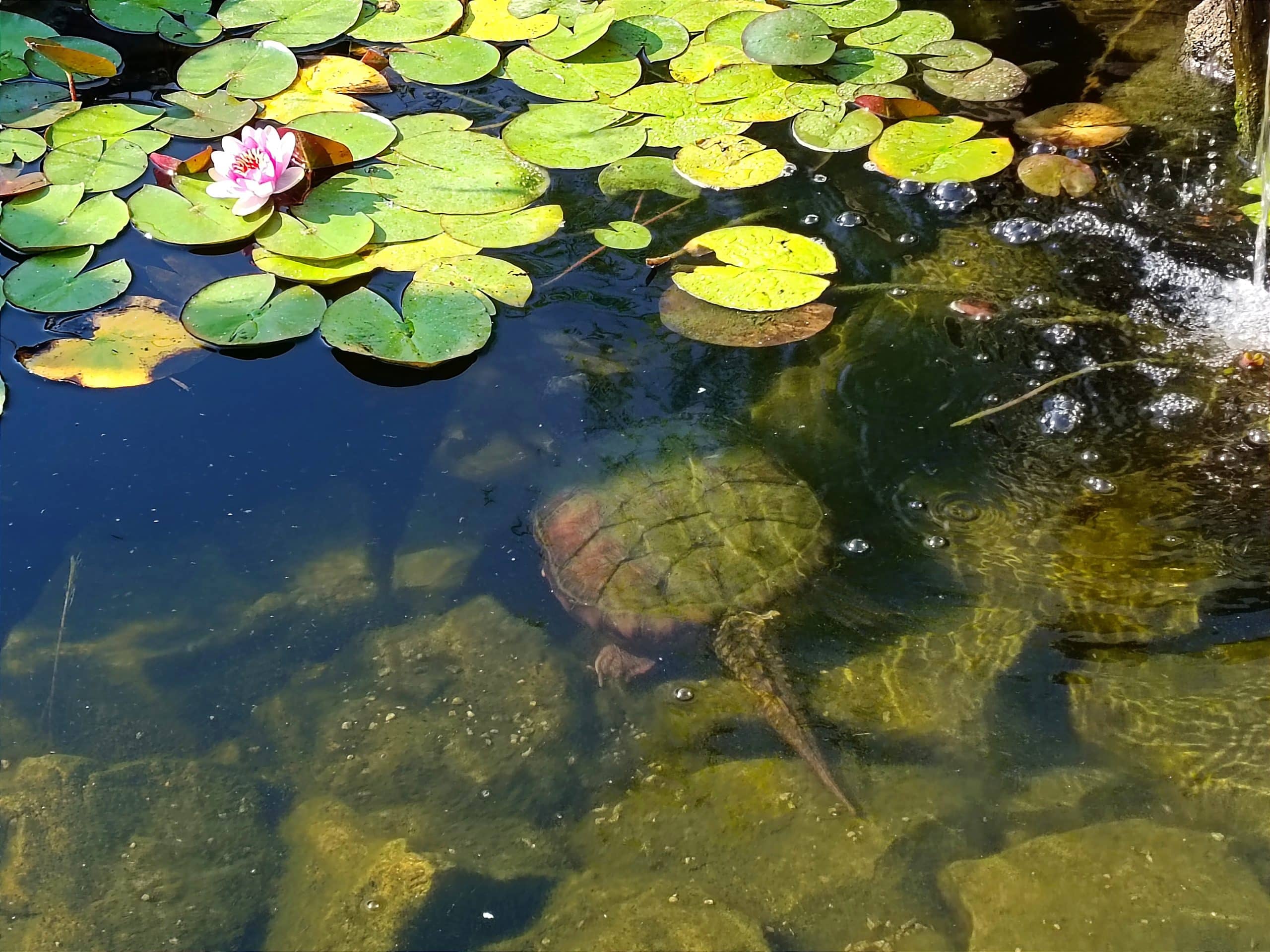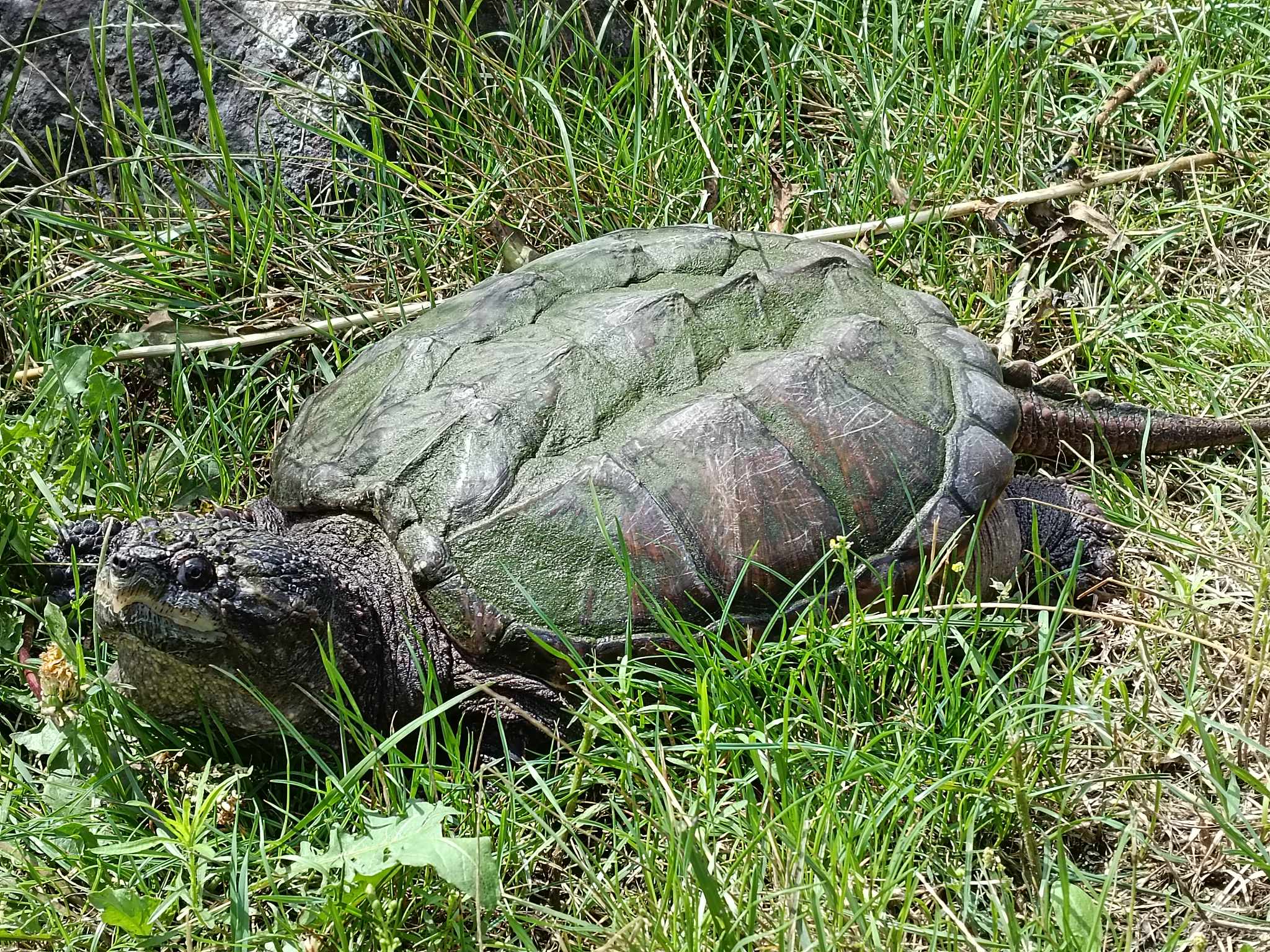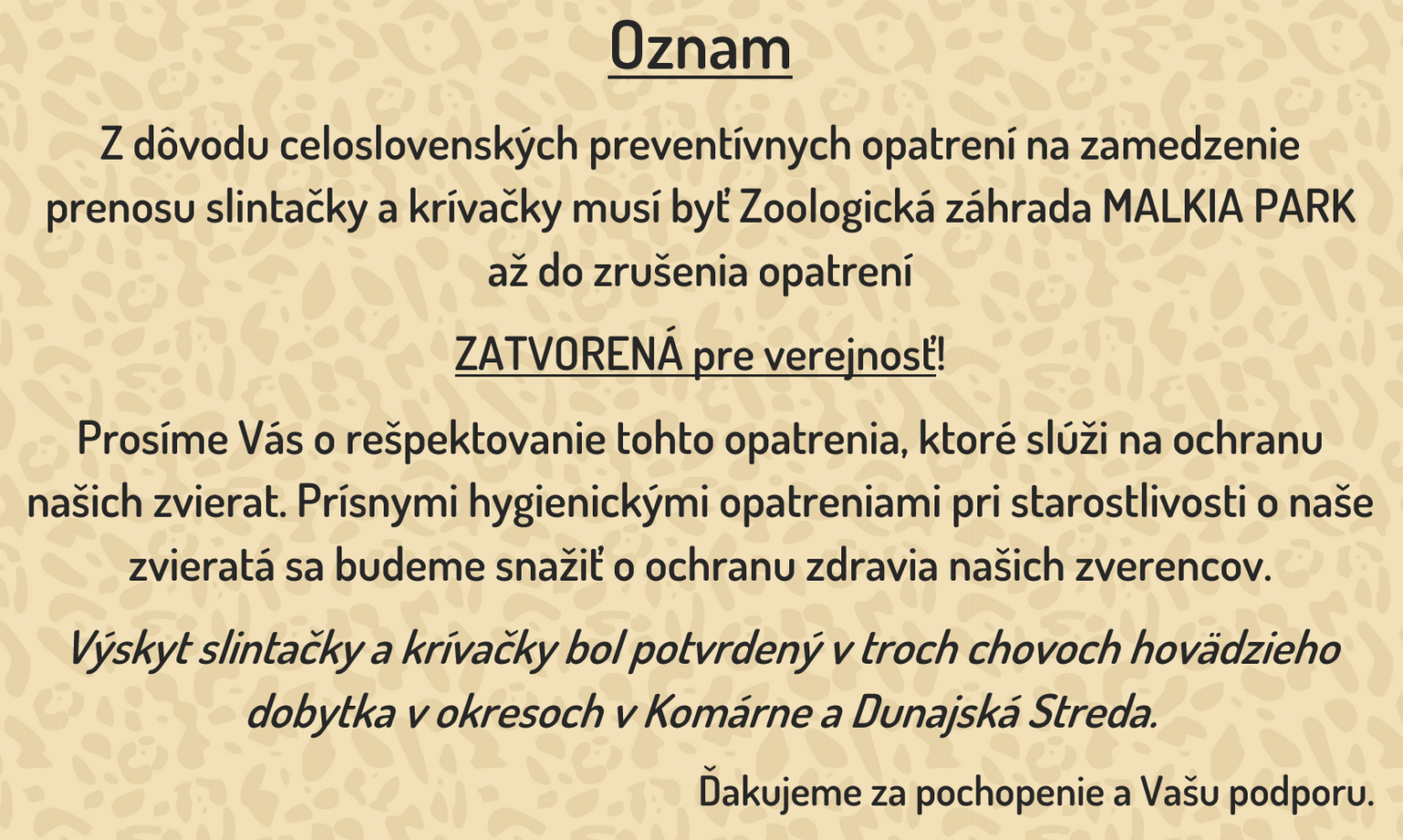The snapping turtles have a long tail that is often as long or longer than the carapace, which is covered with bony plates. They also have a large head, which is covered by a thick, horny plate and cannot be completely retracted under the carapace. They have a distinctly long neck and a sharp, curved upper jaw. The powerful mouth of the snapping turtle has no teeth, but has knife-sharp, hook-shaped jaws with which the animal can easily catch fish, waterfowl, amphibians, and reptiles. The forelimbs have strong and powerful claws that tear the prey to pieces unless it can be swallowed in one gulp. The carapace is only weakly developed and does not extend over the head, limbs, and tail.
They spend most of their time underwater, lying at the bottom of shallow freshwater lakes, ponds, and slow-moving rivers. They spend winter underwater in cold climates, but often remain very active under frozen water. They are very aggressive on the ground and will often pounce on an attacker when in danger.
The snapping turtle mates in the water, with the smaller male climbing on top of the female. The female digs a hole on the shore where she hides her eggs. The colouration of the young is much lighter. Immediately after hatching, they try to get into the water, where they are well hidden during their first year of life. They grow rapidly and by the age of one year their carapace already measures 15 cm.
The snapping turtle attacks and snaps at everything within reach of its jaws. It will not even stop for a baby alligator.
In the past, snapping turtles were used to retrieve the bodies of victims of accidents, murders, or suicides in lakes. They were released into the water tied to a rope, and when the snapping turtle pulled, it was a signal that it had just found the body.
